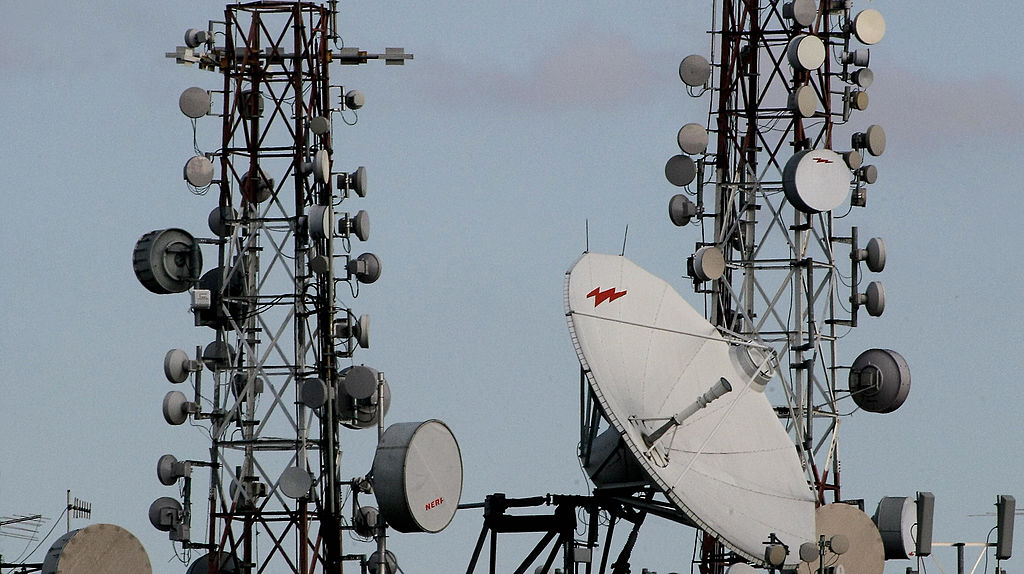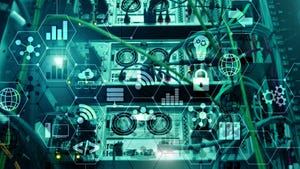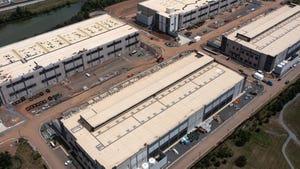Data Centers and Edge Computing in 2021 and BeyondData Centers and Edge Computing in 2021 and Beyond
Who drives the expansion of edge computing capacity, where this infrastructure gets deployed, and why.

While hyperscalers are driving much of the data center capacity growth in the form of big computing facilities in mature and emerging markets, they aren't the primary players at the edge. It's telcos and enterprises that are driving most of the growth in edge computing. And next year, they're going to turn up the heat at the edge some more.
Content delivery network capacity and network function virtualization have been the primary drivers behind telcos' deployments of edge computing infrastructure. Meanwhile, industrial automation is the biggest driver in the enterprise. While edge deployments for next-generation applications like autonomous vehicles (including drones) and augmented and virtual reality (AR/VR) are happening, they are still in their infancy.
The pandemic doesn't appear to have had a meaningful impact on these trends, but that's because edge computing had been in growth mode prior to the global health crisis.
COVID-19 "has not really played a role," Cliff Grossner, senior director of research at Omdia, a Data Center Knowledge sister research organization, said. "Many [edge computing deployment] projects were already ongoing."
Grossner's team released a report in August analyzing the edge computing infrastructure market. In the report, titled Data Center Compute at the Edge, they forecast that the number of servers deployed at the edge will have grown from just north of 2.5 million in 2020 to about 3 million in 2021. They estimate that in 2024, 5 million, or 26 percent of all servers shipped that year, will be deployed at the edge – up from 20 percent in 2019.
Omdia uses network latency to define edge computing infrastructure. If a packet roundtrip between a server and an end-user device takes 20 milliseconds or less, the analysts consider that server edge computing infrastructure. If the roundtrip takes 5 millisecond or less, it's "far edge." If it takes between 5 and 20 milliseconds, it's "near edge."
Earliest Adopters
Omdia projects that enterprise edge deployments would be responsible for about 10 percent of all server units shipped in 2020 and a similar percentage in 2021. Of all servers enterprises will buy in 2024, about 38 percent will be deployed for edge computing purposes, the analysts forecast.
Many of these companies were some of the earliest adopters of edge computing, the report points out (think healthcare, industrial, retail). One big reason the segment is now moving even more compute capacity to the edge is to enable "smart manufacturing" and leverage IoT devices.
They're deploying this computing infrastructure on their own premises, such as factory floors or retail branches, as well as in local and regional colocation data centers, Grossner explained.
He expects this trend to drive revenue growth for colocation providers. "The push for colocation up until this year has been for enterprises to consolidate and move to managed infrastructure," Grossner said. Now, enterprise edge computing "becomes a growing part of their business."
Telcos See Opportunities
If just over one-fifth of all servers shipped to telecommunications companies in 2019 were deployed at the telco edge, these companies will deploy about one of every three servers they buy in 2024 at the edges of their networks, Omdia forecasts.
Telcos surveyed by the analysts expect the edge computing infrastructure they've been deploying to pay for itself through cost savings they get by virtualizing network functions or replacing expensive dedicated hardware appliances with their software versions running on commodity servers.
Data Center Compute at the Edge report by Omdia, published in August 2020)
But they are expected to invest even more in edge computing going forward in order to pursue new revenue streams from things like video content delivery, autonomous-vehicle communications, AR/VR, and gaming, according to Omdia.
Today, much of their edge computing infrastructure is going into telcos' semi-regional Points of Presence, Grossner said. "The next step is the CO (central office) and the cell tower," he said. A relatively small number of telco edge servers are currently going into locations of the latter two types.
Telcos also have been setting up some edge computing equipment directly at the locations of their enterprise customers. These could be factory floors, where the infrastructure enables industrial automation – the biggest application of edge computing today, Grossner said.
The telcos manage customer-owned equipment in some of cases, own it in others, and yet in other cases the equipment comes from cloud providers that offer services to the industrial customers at the edge.
The Mobile Edge
Grossner also noted some early deployments of mobile edge computing that telcos and cloud providers have done recently. This is where cloud infrastructure services are hosted on a site closest to the mobile device consuming them, switching from site to site dynamically, along with the device.
It's these types of services that have been driving the early edge computing infrastructure deployments in telco central offices and near wireless towers. Verizon has announced mobile edge services together with Azure and AWS, for example. AT&T has ongoing partnerships with Azure and Google Cloud around edge computing, including for mobile applications.
Hyperscalers are Already at the Edge
The reason hyperscale cloud providers aren't huge growth drivers in edge computing infrastructure deployments is they already have sprawling networks of data centers outside of their core cloud campuses.
Microsoft, for example, has 150 or so Points of Presence around the globe. Each of these is typically some number of racks inside a colocation data center, Grossner explained. And hyperscalers are continuing to build those out.
Data Center Compute at the Edge report by Omdia, published in August 2020)
Hyperscalers deployed 5 percent of the servers they bought in 2019 for edge computing purposes, according to Omdia's report. That number will climb up to 12 percent by 2024, the analysts estimate.
While industrial automation and cloud gaming are the biggest growth drivers for hyperscaler edge deployments now – and they will likely remain the same next year – video streaming, PC-as-a-Service, and cloud-delivered AR/VR are also important applications for this type of infrastructure going forward, Grossner said.
The Local Advantage
Omdia's definition of edge computing makes tier-two cloud service providers (CSPs) – the likes of Oracle, IBM, or Rackspace, but also much smaller, local providers – to a large extent already at the edge. That's because they built data centers close to their end users to begin with.
Omdia reviewed 1,000 latency tests between servers located in the same region or city as end users and found that almost half provided less than 20 milliseconds roundtrip time. "This close proximity has been one of the unique differentiators for local CSPs when faced with competition from hyperscalers," the report reads.
The researchers point out that the larger tier-two CSPs, such as Oracle, IBM, Apple, or SAP, "have a more centralized server deployment model, resembling" hyperscalers. And they expect these large tier-twos to step up deployments in more locations as they compete with the big three (AWS, Azure, and Google Cloud).
By Omdia's estimate, 31 percent of all servers shipped to tier-two CSPs in 2019 could be considered edge. The analysts forecast that the tier-two CSP edge will be responsible for 37 percent of all servers shipped to this type of data center operator.
Regardless of 5G
Of course, no article on edge computing is complete without a mention of 5G. According to Grossner and his colleagues, however, it doesn't have to be so.
The drivers for edge computing are latency, data gravity (this is the idea that datasets have grown so large, it's a lot easier to bring the analytics compute muscle to them than to move the data to a different location to compute on it), data sovereignty (governments are increasingly weary of allowing companies to move their citizens' private data to foreign soil), and bandwidth limitations. 5G plays a role in some of these areas, but it's just a way to move data.
"We believe edge computing exists apart from any particular transmission technology," Grossner said. "Edge computing would happen with or without 5G."
About the Author
You May Also Like







